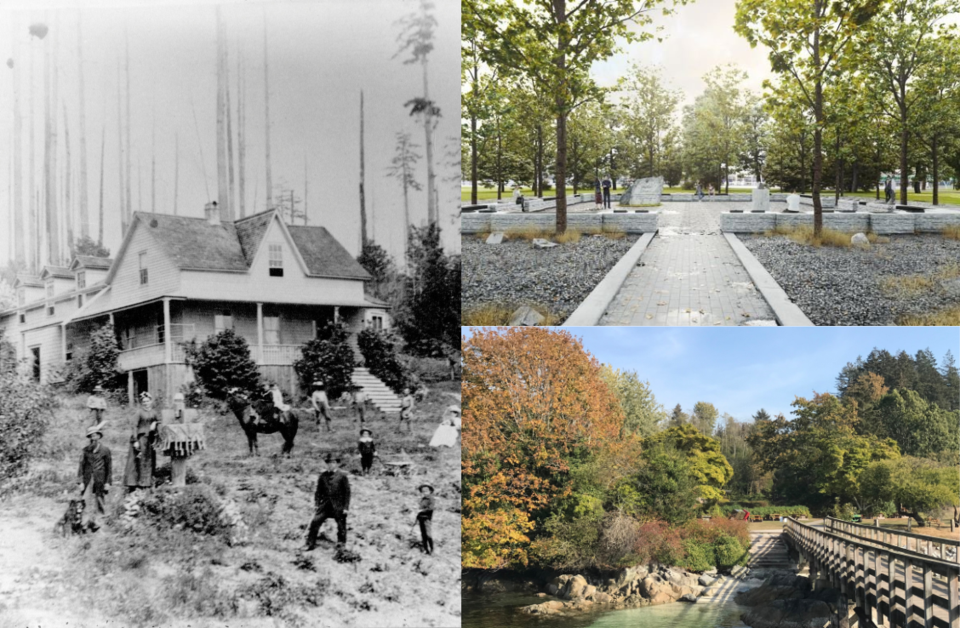Vancouver, the modern Canadian city it is, is made up of all sorts of communities and backgrounds, from the First Nations who've been here since time immemorial to newcomers arriving from around the globe daily.
One of the earliest settler groups to arrive in the region during colonial times were the Irish. Since then Vancouver has had plenty of part-time and permanent Irish residents, enough that in 2018 the Ireland opened a consulate here. A few years ago it was estimated 15,000 Irish people live in Vancouver.
That's led to things like the Celtic Connection, a newspaper that lasted for nearly 30 years based in Vancouver covering news for people with Irish, Scottish, Welsh and English roots in Western Canada and the USA's Pacific Northwest (it wrapped up due to the COVID-19 pandemic). There was also County Kitsilano, which combined Irish and Kitsilano vibes.
So, to celebrate St. Patrick's Day, here are five things you may not know about Ireland and Vancouver.
1. The first European settlers in Vancouver were Irish
While Stamp's Mill and Gastown are often thought of as the beginning of Vancouver's settlement by non-First Nations folks, the first Europeans to set up in what is now Vancouver were the McCleerys.
The McCleery brothers, Fitzgerald and Samuel, moved from Ireland to the region in the 1860s, following in their uncle. In 1862 the McCleerys started working on the land that would become the Southlands, building their families a farm. Stamp's Mill on the south shore of the Burrard Inlet came a couple years later.
Golfers may recognize the name; the McCleery Golf Course in the Southlands is named after the family (and located where their farm used to be).
2. The Guinness family's connections to North Vancouver
Vancouver may not have become the city it is with out the Guinness family, and it has very little to do with their beer.
The Guinness family is a big deal in Ireland, and while it started with a stout, they have a lot of other business ventures.
One of those is the British Pacific Properties in North Vancouver, which started when the company (it's still owned by the Guinness family, at least in part) bought 4,000 acres in West Vancouver.
Ever since the development company has been developing parcels of the land, either as neighbourhoods or custom homes.
At the same time, that gave the Guinness family a vested interest in the area and meant they were instrumental in the building of the Lions Gate Bridge (including the lights) and the Park Royal Mall.
3. Belcarra has a sister city
Vancouver has a few sister cities, but none in Ireland. However, one of Metro Vancouver's smallest municipalities does.
Belcarra, B.C., is twinned with Belcarra, Ireland.
The Canadian community is named after the Irish one, as the first European settler there was William Norman Bole, who from the Irish county of Mayo, which is where the original is.
And while Belcarra, B.C., is one of the smallest parts of Metro Vancouver, it's actually twice as populated as the original, which has around 230 residents.
4. There's a campaign to erect an Irish monument in Vancouver
There's currently a proposal to build a monument in George Wainborn Park to honour Irish Canadians.
While designs have been created, it hasn't been fully funded yet. However, a not-for-profit society is working on it.
5. How an Irish settler's pig nearly led to war in the waters off Vancouver
In 1859 the border between the USA and British Columbia wasn't quite as official as it is now.
For one, the USA was a relatively new country. At the same time the British Empire (reminder, Canad was founded in 1867) wasn't paying too much attention to the Pacific shore of North America. And for a third, the First Nations living in this part of the world never had borders set up like the colonial powers did.
When the USA and UK drew up documents deciding who got what land (notably not consulting local First Nations) they decided on the 49th parallel and that the UK got Vancouver Island. However, the wording for the islands between the mainland and Vancouver Island was vague, and both sort of just claimed them.
The short version of this conflict is that settlers from both nations settled on the islands. On what is now known as San Juan Island an Irish sheep rancher named Chalres Griffin lived for some time with farmhands, sheep and some pigs.
An American settler Lyman Cutlar ended up settling on the same island and farmed the land. When one of Griffin's pigs ate some of Cutlar's crops, Cutlar shot the pig dead. When he tried to financially compensate Griffin for shooting the pig, Griffin demanded more.
The conflict between the two men escalated into an international kerfuffle over the next month and more than 450 American troops along with cannons arrived and took over the island while the British set five warships with more than 2,100 men. And canons, too.
Eventually a diplomatic resolution was arrived at and a more detailed border agreed to.



